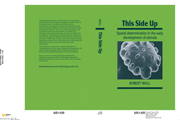Book contents
- Frontmatter
- Contents
- Preface
- Acknowledgements
- 1 Oogenesis
- 2 From oocyte to zygote
- 3 Does cleavage cut up a preformed spatial pattern?: the case of spiralian embryos
- 4 The limits of mosaicism in non-spiralian cleavage
- 5 Cellular interactions in the morula and blastula: the case of sea urchin embryos
- 6 Interactions at morula and blastula in other embryos
- 7 Interactions between moving cells: the case of amphibian gastrula
- 8 Spatial determination in the gastrulae of other groups
- 9 Determination in embryos showing partial cleavage
- 10 Patterns and mechanisms in early spatial determination
- References
- Index
4 - The limits of mosaicism in non-spiralian cleavage
Published online by Cambridge University Press: 06 October 2009
- Frontmatter
- Contents
- Preface
- Acknowledgements
- 1 Oogenesis
- 2 From oocyte to zygote
- 3 Does cleavage cut up a preformed spatial pattern?: the case of spiralian embryos
- 4 The limits of mosaicism in non-spiralian cleavage
- 5 Cellular interactions in the morula and blastula: the case of sea urchin embryos
- 6 Interactions at morula and blastula in other embryos
- 7 Interactions between moving cells: the case of amphibian gastrula
- 8 Spatial determination in the gastrulae of other groups
- 9 Determination in embryos showing partial cleavage
- 10 Patterns and mechanisms in early spatial determination
- References
- Index
Summary
The last chapter showed severe limitations in the concept of ‘mosaic’ development as it applies to spiralian embryos. It did, however, demonstrate differential segregations occurring at cleavage there, and seen for visibly distinct plasms, some macromolecules and determinants inferred from experimental studies. To what extent are differential segregations and mosaicism general phenomena of cleavage? This chapter will present the available evidence for other animal groups in an order chosen simply for convenience.
Ascidians
Although they are a deuterostome group quite closely related to the vertebrates, it has long been recognised that the ascidians provide one of the best examples of mosaic development. We have, in fact, seen in Chapter 2 that this is foreshadowed in the fertilised egg by probably the clearest example of ooplasmic segregation into a bilaterally symmetrical pattern, accompanied by restrictions in the development of egg fragments. Figure 4.1 shows some stages in the segregation of the ooplasms by the early cleavages in Styela. Conklin (1905a) was able to show that the fates of the blastomeres correlated closely with the type of ooplasm each received. His fate map was later modified first by Ortolani and most recently by the lineage tracer studies of Nishida & Satoh (1983, 1985; Nishida, 1987; see also Zalokar & Sardet, 1984) from which the maps and lineage plan of Figure 4.2 are taken.
- Type
- Chapter
- Information
- This Side UpSpatial Determination in the Early Development of Animals, pp. 96 - 143Publisher: Cambridge University PressPrint publication year: 1990



